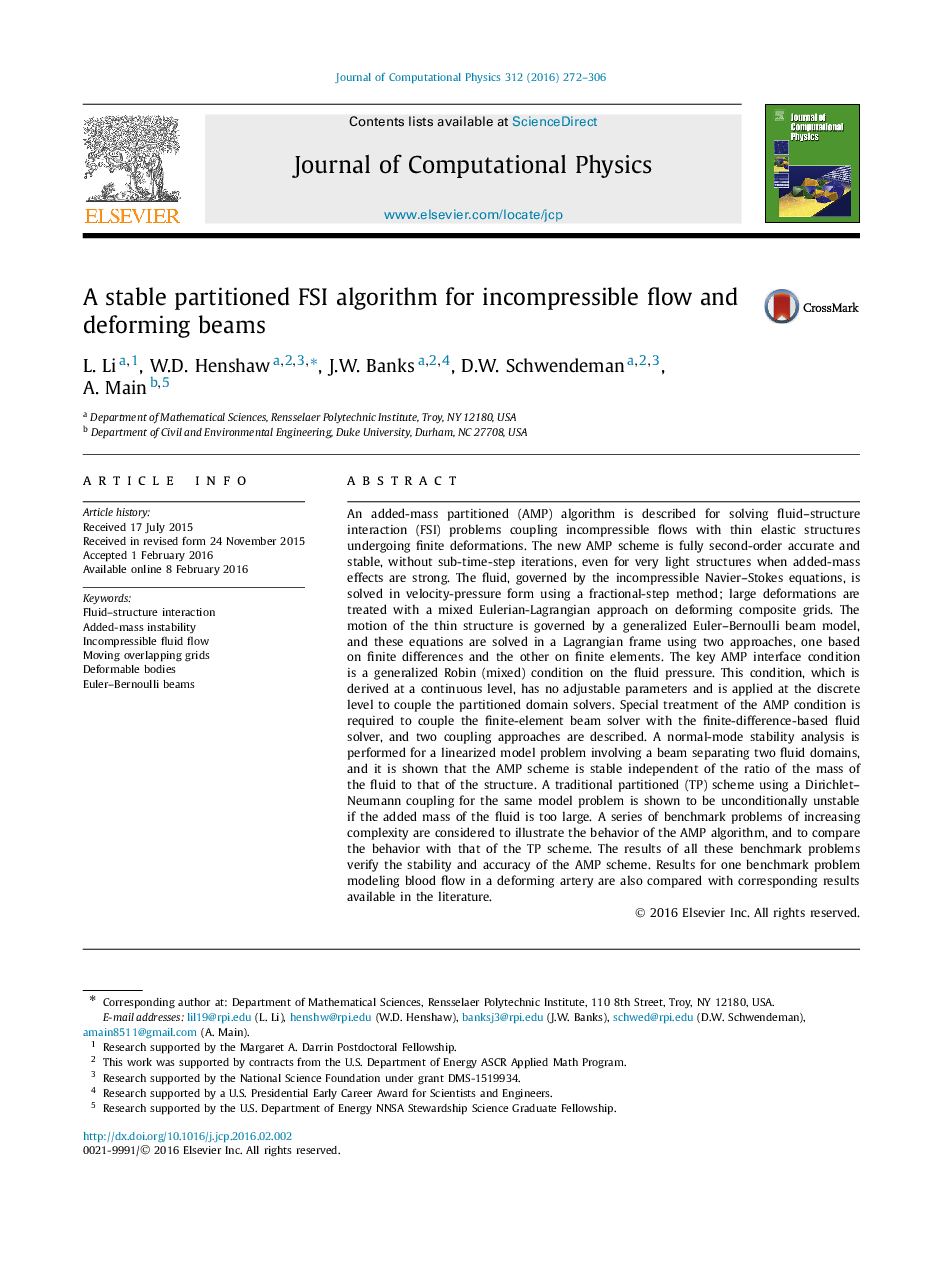| Article ID | Journal | Published Year | Pages | File Type |
|---|---|---|---|---|
| 518561 | Journal of Computational Physics | 2016 | 35 Pages |
An added-mass partitioned (AMP) algorithm is described for solving fluid–structure interaction (FSI) problems coupling incompressible flows with thin elastic structures undergoing finite deformations. The new AMP scheme is fully second-order accurate and stable, without sub-time-step iterations, even for very light structures when added-mass effects are strong. The fluid, governed by the incompressible Navier–Stokes equations, is solved in velocity-pressure form using a fractional-step method; large deformations are treated with a mixed Eulerian-Lagrangian approach on deforming composite grids. The motion of the thin structure is governed by a generalized Euler–Bernoulli beam model, and these equations are solved in a Lagrangian frame using two approaches, one based on finite differences and the other on finite elements. The key AMP interface condition is a generalized Robin (mixed) condition on the fluid pressure. This condition, which is derived at a continuous level, has no adjustable parameters and is applied at the discrete level to couple the partitioned domain solvers. Special treatment of the AMP condition is required to couple the finite-element beam solver with the finite-difference-based fluid solver, and two coupling approaches are described. A normal-mode stability analysis is performed for a linearized model problem involving a beam separating two fluid domains, and it is shown that the AMP scheme is stable independent of the ratio of the mass of the fluid to that of the structure. A traditional partitioned (TP) scheme using a Dirichlet–Neumann coupling for the same model problem is shown to be unconditionally unstable if the added mass of the fluid is too large. A series of benchmark problems of increasing complexity are considered to illustrate the behavior of the AMP algorithm, and to compare the behavior with that of the TP scheme. The results of all these benchmark problems verify the stability and accuracy of the AMP scheme. Results for one benchmark problem modeling blood flow in a deforming artery are also compared with corresponding results available in the literature.
